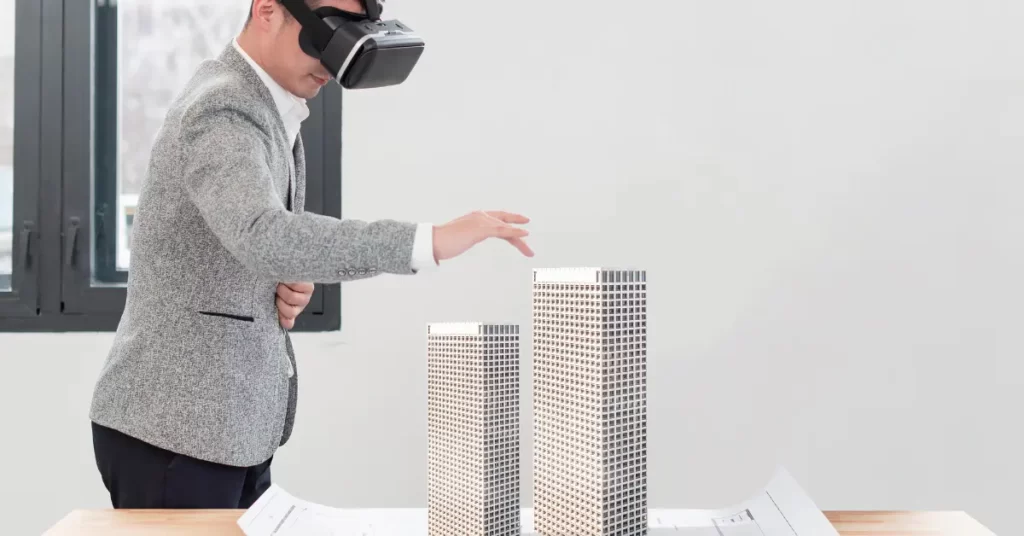In the ever-evolving realm of architectural design, Virtual Reality (VR) has emerged as a game-changing technology that is revolutionizing the way architects conceptualize, visualize, and communicate their ideas. This immersive technology has transcended traditional design methods, offering architects and stakeholders an unparalleled level of engagement and understanding of spatial designs. This blog explores the profound impact of Virtual Reality in architectural design, delving into its benefits, applications, and the paradigm shift it has brought to the industry.

Transforming Spaces Through Virtual Reality in Architectural Design
1. Enhanced Visualization and Spatial Perception
Architectural design has historically relied on two-dimensional drawings and blueprints to convey spatial concepts. However, VR has shattered these limitations by enabling architects to create three-dimensional virtual models that can be explored in a lifelike environment. This immersive experience allows architects, clients, and collaborators to fully grasp the scale, proportions, and spatial relationships of a design before it’s even built. The ability to ‘walk through’ a virtual space brings a new level of realism, helping to identify potential design flaws or improvements that may have gone unnoticed in traditional methods.
2. Design Iteration and Collaboration
VR technology empowers architects to swiftly iterate through design ideas. With real-time adjustments, they can modify elements like materials, lighting, and textures, gaining immediate insights into how these changes impact the overall aesthetic and functionality. Furthermore, VR transcends geographical barriers, facilitating remote collaboration between multidisciplinary teams. Architects, engineers, and clients can gather in a shared virtual environment to discuss, evaluate, and refine designs, fostering a collaborative and efficient design process.
3. Client Engagement and Decision-Making
One of the most significant impacts of VR in architectural design is its ability to bridge the gap between architects and clients. Traditionally, clients might struggle to envision the final result based solely on blueprints. VR technology empowers architects to create interactive presentations that allow clients to immerse themselves in their future space. This heightened engagement enables clients to provide more informed feedback, leading to designs that better align with their vision. Moreover, the realistic representation aids in quicker decision-making, as clients can confidently approve designs they have experienced firsthand.
4. Minimizing Costs and Enhancing Efficiency
Design flaws and misinterpretations can be costly to rectify once construction is underway. Virtual Reality acts as a preventive measure by enabling architects to identify and rectify issues before they reach the construction phase. This reduces the likelihood of costly revisions and delays, ultimately saving time and resources. Additionally, VR aids in material selection and testing, as architects can visualize how different materials behave in different lighting conditions and environments.
5. Impact on Architectural Education
Virtual Reality’s influence extends beyond professional practice into architectural education. Students can now immerse themselves in virtual environments that mimic real-world scenarios, allowing them to gain practical experience before entering the field. This hands-on learning accelerates their understanding of spatial design, construction processes, and design principles.
6. Future Possibilities
As technology continues to advance, so too will the capabilities of Virtual Reality in architectural design. Imagine AI-driven design simulations, where architects can collaborate with AI entities to generate innovative design solutions. Additionally, VR could play a pivotal role in community engagement, allowing stakeholders to virtually experience proposed architectural projects and provide valuable input.
Conclusion
The impact of Virtual Reality on architectural design is nothing short of transformative. It has redefined how architects visualize, communicate, and refine their concepts. From enhancing spatial perception to fostering collaboration, VR technology is reshaping the architectural landscape. As the technology evolves, it holds the promise of further streamlining design processes, reducing costs, and even shaping the way we educate future architects. Embracing Virtual Reality is not just an option; it’s a leap into a new dimension of architectural innovation.
For more SketchUp tutorials you can check out https://sketchupguru.com/blog/
You can also check more tutorial videos for sketchup on our YouTube Channel,
https://www.youtube.com/c/SketchupGuru
To know about the Top Online 3D Rendering Courses for 2022 click,












